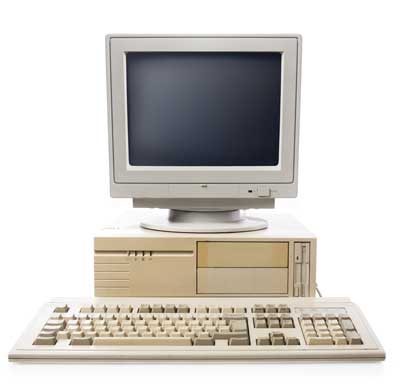4 GENERATION COMPUTER

 The fourth generation computers were the extension of third generationtechnology. The fourth generation computers emerged with development of the VLSI (Very Large Scale Integration).With the help of VLSI technology microprocessor came into existence. The computers were designed by using microprocessor, as thousands of integrated circuits were built onto a single silicon chip. What in the first generation filled an entire room could now fit in the palm of the hand. The fourth generation computers became more powerful, compact, reliable and affordable. As a result, they give rise to personal computer (PC) revolution.
The fourth generation computers were the extension of third generationtechnology. The fourth generation computers emerged with development of the VLSI (Very Large Scale Integration).With the help of VLSI technology microprocessor came into existence. The computers were designed by using microprocessor, as thousands of integrated circuits were built onto a single silicon chip. What in the first generation filled an entire room could now fit in the palm of the hand. The fourth generation computers became more powerful, compact, reliable and affordable. As a result, they give rise to personal computer (PC) revolution.
The period of fourth generation was 1971-1980. The computers of fourth generation used Very Large Scale Integrated (VLSI) circuits. VLSI circuits having about 5000 transistors and other circuit elements and their associated circuits on a single chip made it possible to have microcomputers of fourth generation. Fourth generation computers became more powerful, compact, reliable, and affordable. As a result, it gave rise to personal computer (PC) revolution. In this generation time sharing, real time, networks, distributed operating system were used. All the high-level languages like C, C++, DBASE etc., were used in this generation.

The main features of fourth generation are:
- VLSI technology used
- Very cheap
- Portable and reliable
- Use of PC's
- Very small size
- Pipeline processing
- No A.C. needed
- Concept of internet was introduced
- Great developments in the fields of networks
- Computers became easily available
Some computers of this generation were:
- DEC 10
- STAR 1000
- PDP 11
- CRAY-1(Super Computer)
- CRAY-X-MP(Super Computer)
For the first time in 1981 IBM introduced its computer for the home user and in 1984 Apple introduced the Macintosh Microprocessor.
CHARACTERISTICS
1) The fourth generation computers have microprocessor-based systems.
2) They are the cheapest among all the computer generation.
3) The speed, accuracy and reliability of the computers were improved in fourth generation computers.
4) Many high-level languages were developed in the fourth generation such as COBOL, FORTRAN, BASIC, PASCAL and C language.
5) A Further refinement of input/output devices was developed.
6) Networking between the systems was developed.
IBM 4341, DEC 10, STAR 1000, PUP 11 and APPLE II are the examples of fourth generation computers.
CHARACTERISTICS
1) The fourth generation computers have microprocessor-based systems.
2) They are the cheapest among all the computer generation.
3) The speed, accuracy and reliability of the computers were improved in fourth generation computers.
4) Many high-level languages were developed in the fourth generation such as COBOL, FORTRAN, BASIC, PASCAL and C language.
5) A Further refinement of input/output devices was developed.
6) Networking between the systems was developed.
IBM 4341, DEC 10, STAR 1000, PUP 11 and APPLE II are the examples of fourth generation computers.
No comments:
Post a Comment